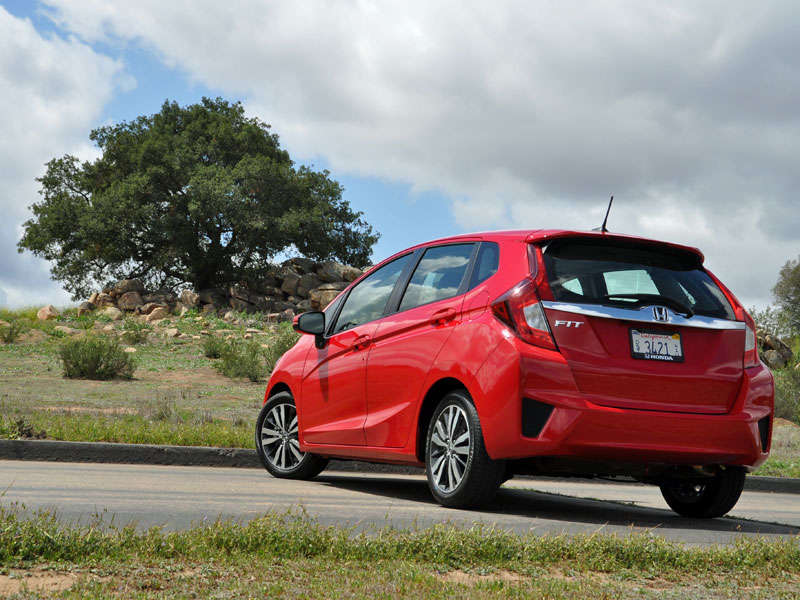Recent Articles
Popular Makes
Body Types
2015 Honda Fit First Drive Review
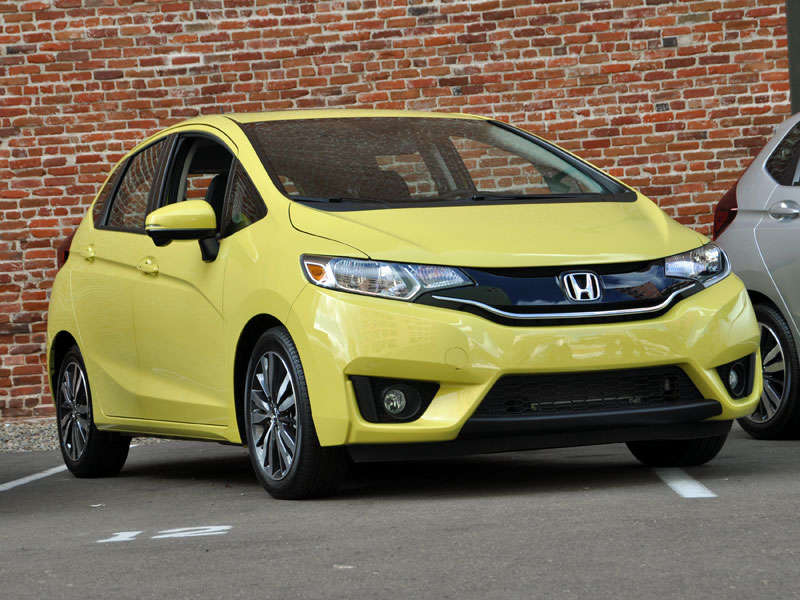
Overcoming objections is critical to closing any sale, and as far as its products are concerned, Honda is particularly adept at this particular skill. Look no further than the redesigned 2015 Honda Fit for evidence of the automaker’s talents in this regard, a powerhouse of an entry-level car that effectively neutralizes almost any argument against its purchase.
Honda doesn’t plan to stop overcoming objections anytime soon, either, saying that its future product development strategy in years to come is defined by the all-new 2015 Fit. That means we can all look forward to next-generation Honda cars, SUVs, and even a pickup truck designed to deliver on what the company claims are its core brand values: Clean, Safe, and Fun.
Beyond this, Honda focused on packaging, performance, and technology as the driving concepts guiding the development of the new 2015 Honda Fit. To meet those goals, the 2015 Fit aims to combine a versatile interior with class-leading fuel economy and class-above connectivity and technology.
To learn more about the redesigned 2015 Fit, I traveled to San Diego and spent a day driving the new car on local freeways, city streets, suburban boulevards, and twisting hilly roads. Though my time with the new Fit was brief, it’s not hard to see why Honda is calling it the new benchmark in its segment.
2015 Honda Fit First Drive Review: Prices and Lineup
Though Fit buyers are better educated and make more money than people who buy other subcompact cars, that doesn’t mean they’re rich, so the first objection Honda needs to overcome with the redesigned Fit is this one: “I can’t afford to buy a new car.”
Sure you can. New 2015 Honda Fit prices are more affordable than you might think, starting at $15,525* for the base Fit LX with a manual transmission. If you can’t operate a clutch pedal, don’t worry. Honda provides a continuously variable transmission (CVT) for a quite reasonable $800.
Honda expects 35% of Fit buyers to choose the LX model. Standard equipment includes air conditioning, power side mirrors, power windows, power door locks with remote keyless entry, and cruise control. The driver’s seat includes a manual seat height adjuster, and the Fit LX is equipped with a trip computer, automatic headlights, and LED taillights. An audio system with a 5-inch display and a USB port is also tossed in for good measure, along with a reversing camera. And what’s this? Soft-touch material on the dashboard? Too bad it’s not on the door panels, too.
Based on Honda’s expectations, more than half of 2015 Fit buyers (55%) will choose the EX model. The price tag is $17,435* with a manual gearbox, and $18,235* with the optional CVT. This model replaces the former Sport trim level, and is similarly equipped with 16-inch aluminum wheels, fog lights, and, with the CVT, a set of paddle shifters. Additionally, the EX features the same 7-inch Display Audio system that comes in the Honda Civic, one that looks just like an iPad clipped into the dashboard, and which provides Aha connectivity and a wide range of HondaLink services. Additional Fit EX upgrades include dual USB ports, Smart Entry passive keyless entry with push-button starting, a power sunroof, and Honda’s LaneWatch system, which uses a camera to monitor traffic in the lane to the right of the car.
For the first time, Honda will offer leather seats in the Fit, and the company expects that 10% of buyers will want it. The 2015 Fit EX-L costs $19,800* and in addition to leather seats includes a leather-wrapped steering wheel, a leather-wrapped shift knob, heated front seats, and turn signal indicators for side mirror housings. This model also comes with a standard CVT. For another grand, Honda will install a hard-drive navigation system with real-time traffic, satellite radio, and HD Radio.
If this level of equipment doesn’t scratch your extra-stuff itch, dealers plan to offer a range of accessories to liberate more cash from your wallet. Oh, right, you can’t afford a new car.
* Prices do not include a destination charge
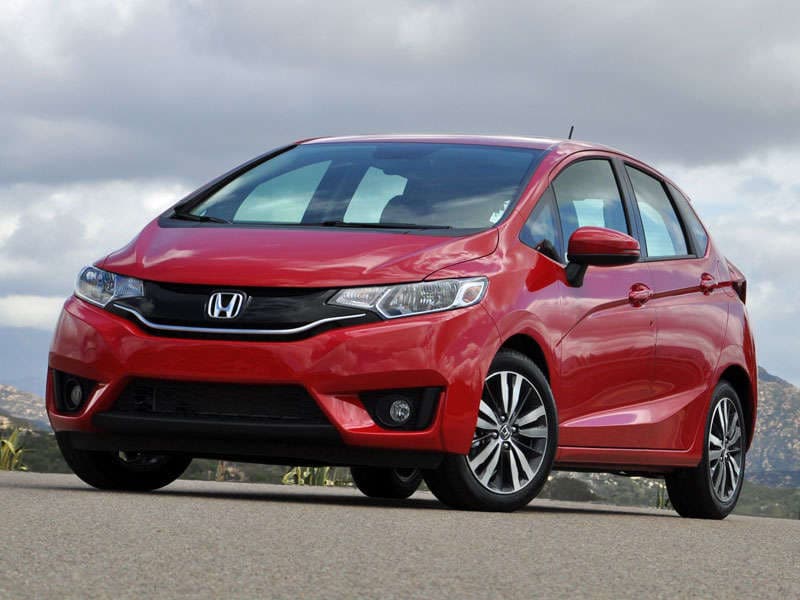
2015 Honda Fit First Drive Review: Styling and Design
Honda says that it employs a “Man Maximum, Machine Minimum” approach to the 2015 Fit’s overall design, describing how the automaker plans to overcome another possible buyer objection: “I need a bigger car.”
No you don’t. The new Honda Fit is positively huge inside, as though witchcraft might be at work in the design, especially in light of the fact that the 2015 version is actually 1.6 inches shorter than the 2013 version that it replaces. Despite this shrinkage, the new Fit provides almost 5 cubic-feet of additional interior volume, and a whopping 4.8 inches of extra rear legroom. Seriously, you could get a 2015 Fit EX-L in Crystal Black Pearl, tint the windows black, and start an ecologically friendly limo service in a place like L.A. Don’t worry too much about airport runs, either. Just stack the luggage to the roof inside of the 16.6 cu.-ft. trunk, which is bigger than what the midsize Honda Accord provides, and effortlessly zip right on over to LAX.
To achieve these gains in interior volume, Honda made three key changes. First, a new fuel tank that takes up less space is mounted beneath the front seats. Second, the 2015 Fit gets a 1.2-inch wheelbase stretch. Third, width increases by about a third of an inch. The car’s height is unchanged at 60 inches.
Honda wraps all of this interior space in what it calls a “Crossfade Monoform” exterior design. Instantly familiar yet clearly different from the previous version of the Fit, the 2015 model has a more angular and chiseled appearance than before. Compared to the conceptual drawings guiding the new Fit’s styling, the one rolling into Honda showrooms is a disappointment, bowing to the realities of both production and governmental requirements. But it’s the thought that counts, right?
New colors for the 2015 Fit include White Orchid Pearl, Aegean Blue Metallic, Passion Berry Pearl, and a relentlessly vivid Mystic Yellow Pearl. Milano Red, Alabaster Silver Metallic, Modern Steel Metallic, and Crystal Black Pearl are carried over from the previous model.
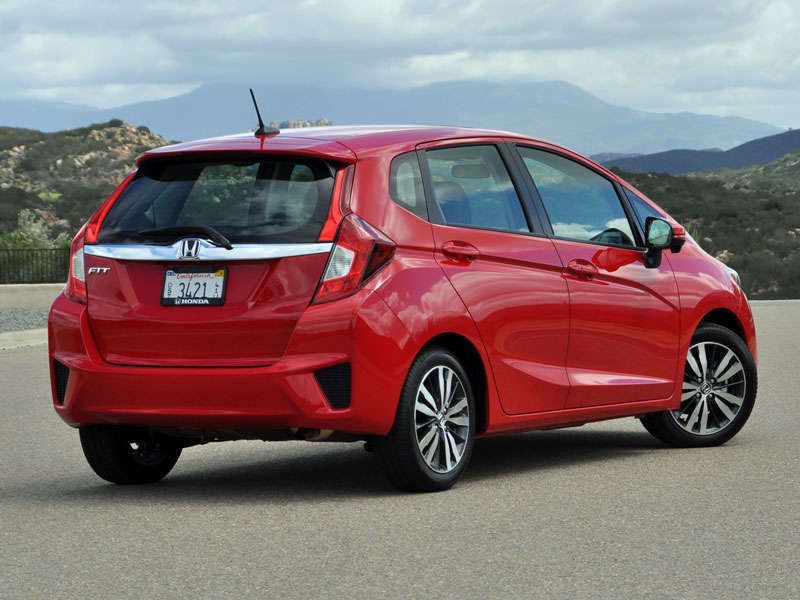
2015 Honda Fit First Drive Review: Comfort and Convenience
Small cars are usually cramped inside, and have traditionally relegated modern comfort and convenience items to larger, more expensive vehicles. Honda is prepared, though, to overcome another potential objection to the redesigned 2015 Fit: “Little cars are uncomfortable and unrefined.”
Starting with that latter characteristic, Honda claims “class-leading quietness” for the new Fit. I’ll buy that, and I’ll also say that based on a day driving a Fit EX and a Fit EX-L, this entry-level car exhibits dramatic upgrades in terms of materials quality and the cabin’s overall look and feel. The previous Fit always reminded you that you’d purchased the least expensive Honda in an American showroom. The new Fit always gives you reason to forget that fact.
Comfort levels are also improved now that Honda offers a greater range of adjustment for the Fit’s driver’s seat. In the old car, I always felt like I sat too low in the vehicle. The new Fit is equipped with a standard manual height adjuster, and it resolves that problem. However, tall people will still feel like their legs are crammed under the dashboard, and given the massive upgrade in rear seat legroom, there’s not a good reason for this. More seat track travel, please.
Honda has also ditched the former Fit’s fold-down driver’s seat armrest, replacing it with a conventional one covering the center console. Ostensibly designed for use by both front-seat occupants, this solution isn’t very good for either of them.
Thanks to its increased rear legroom, the Fit makes an outstanding argument against needing “more car.” The simple truth is that you don’t. Adults will find the rear seat quite comfortable in terms height, thigh support, legroom, and foot room, and because of the fuel tank’s shape and location, the floor is actually tilted like a ramp, providing a built-in footrest. And if you’re planning to put a couple of kids into a Fit, installing child safety seats is not going to be a problem.
Honda says the Fit’s trunk measures 16.6 cu.-ft. You’re unlikely to stack to the roof, though, meaning that from a practical standpoint the Fit holds as much stuff as a Civic. A rear Magic Seat seat design continues, and the front seats fully recline, helping the Fit to provide four seating modes: Utility, Tall, Long, and Refresh.
In Utility mode, the rear seats quickly fold flat to create a cube-shaped cargo space that expands the trunk to 52.7 cu.-ft., a number close enough to a compact crossover suv that you might not notice the difference. Alternatively, flip the Fit’s rear bottom cushions up to achieve Tall mode, which lets you carry taller items upright in the vehicle. Long mode allows something like a surfboard to be carried inside of the car, thanks to a front passenger’s seat that reclines into a flat position. Refresh mode turns the Fit into a bed. Slide the front seats up, recline the seatbacks completely, and they join with the rear seat cushion to create a large lounge area.
Not that we’re recommending that you give up your apartment to afford the payment on this car or anything.
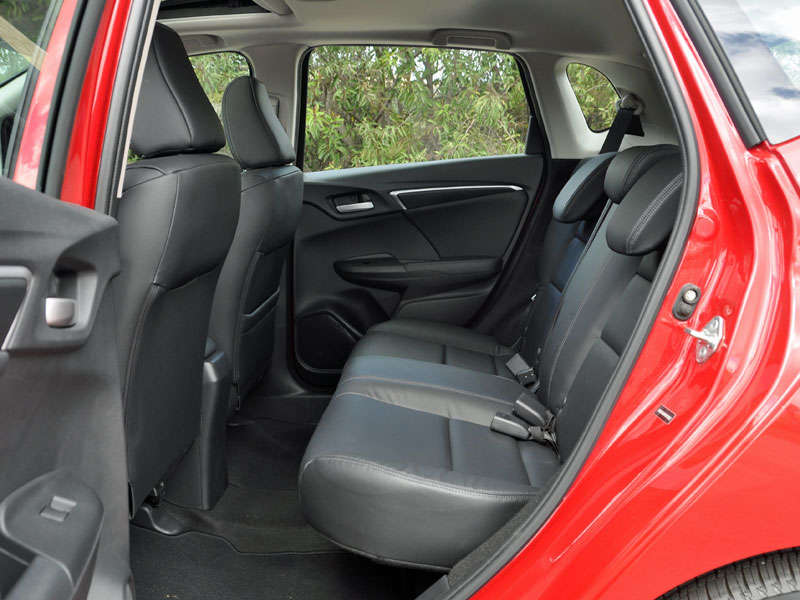
2015 Honda Fit First Drive Review: Safety and Technology
The U.S. Department of Transportation is mandating that all new cars have a reversing camera by the middle of 2018. As you might expect, a lobbying group is pouting about this, because it might add as much as $150 to the price of a new car. Well, Honda figured out how to include one on the 2015 Fit LX, and added a whole bunch of other stuff like Bluetooth, a USB port, and voice recognition technology while increasing the price by just $100, proving such naysayers wrong. In the process, the automaker also overcomes this objection: “I want more stuff on my car.”
For the purposes of this argument, let’s define “stuff” as safety equipment and technology upgrades. Not only does the 2015 Fit have a standard reversing camera, but it’s also a high-tech unit with Normal View, Wide View, and Top Down View displays. When installed in the EX and EX-L models, it even shows dynamic guidelines to help illustrate for the driver what rests in the Fit’s actual path of travel.
In addition to a reversing camera and the basic connectivity features that many people want in a new car, every Fit is equipped with Hill Start Assist, SmartVent front side-impact airbags, and an expanded-view driver’s side mirror that helps the driver to see in the car’s left blind spot. Upgrade to the EX model, and Honda adds its LaneWatch camera to the Fit, which shows what’s along the right side of the car on the 7-inch Display Audio system’s screen when the driver signals a lane change or turn, or when the driver manually activates the system.
It is too early to comment on how well the Fit might perform in crash tests, but historically the scores for subcompact cars have not been good. For the 2014 model year, the Insurance Institute for Highway Safety (IIHS) names only the Chevrolet Spark as a “Top Safety Pick.” However, the new 2015 Honda Fit is equipped with the automaker’s Advanced Compatibility Engineering II body structure design, and the company predicts that it will perform at top-rated levels in terms of occupant protection.
If a crash does occur, and you’re driving a Fit EX or EX-L with next-generation HondaLink services, then the HondaLink Assist system will automatically contact emergency response authorities in order to rush rescuers to the scene of the collision just as rapidly as possible. In addition to HondaLink Assist, this suite of cloud-based services includes smartphone connectivity, the ability to run applications such as navigation and social media platforms, access to Aha radio, and more.
HondaLink is included with the 7-inch Display Audio system that is standard for the Fit EX and EX-L models. Modeled after popular tablet computers, an electro-static touchscreen allows the user to tap, swipe, pinch, and expand information as might be required. The system also features Siri Eyes Free mode, access to Pandora Internet radio, the ability to customize the look and feel of the screen, and more.
Personally, I’m not a big fan of these kinds of systems, preferring actual knobs and buttons for the stereo, but given the number of features that it contains and the added benefit of HondaLink Assist, I suppose there is no alternative.
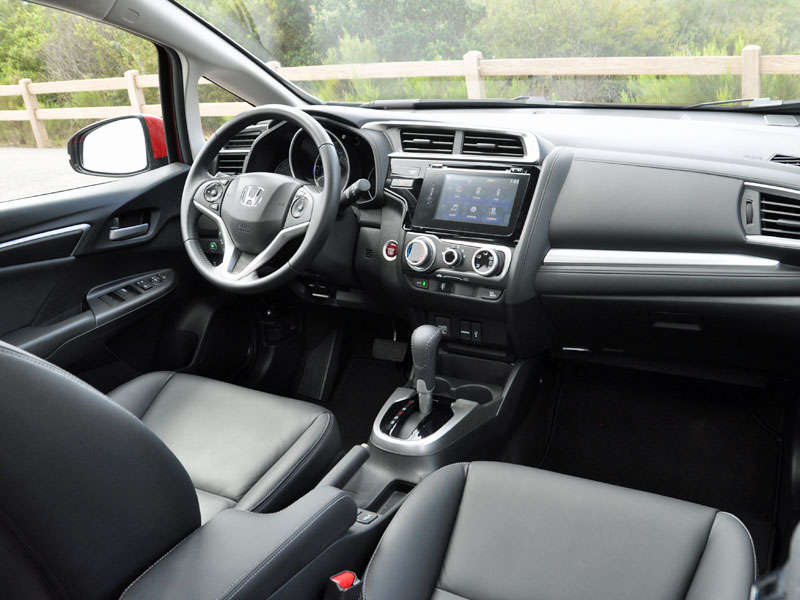
2015 Honda Fit First Drive Review: What's Under the Hood?
Next time you’re traveling your daily commute, look around you. Most people aren’t driving something fun, are they? One of my favorite things about Honda products is that the company doesn’t market its vehicles to driving enthusiasts, but goes ahead and makes them fun to drive anyway. In the process, another potential objection is overcome with the redesigned Fit: “Econoboxes are boring.”
Granted, the new 2015 Fit isn’t going to blow anyone’s mind in terms of acceleration. It is, however, more powerful than before thanks to a new direct injected, 1.5-liter 4-cylinder engine from Honda’s EarthDreams family of fuel-efficient powertrains. This powerplant makes 130 horsepower at 6,500 rpm, an increase of 13 hp over the 2013 model, and 114 lb.-ft. of torque, a bump of 8 lb.-ft.
The Fit LX and EX are equipped with a standard 6-speed manual gearbox designed to deliver crisp and effortless shifting, and a quick and sporty feel. Most people, though, will choose the CVT that Honda says is calibrated to make the Fit more fun to drive. Paddle shifters are included with the CVT on the Fit EX and EX-L models, and this transmission is also equipped with a Sport driving mode that introduces seven pre-defined “gear ratios” for more natural and engaging power delivery.
Alternatively, the driver can activate the Econ driving mode in order to maximize fuel economy, an endeavor assisted by more aerodynamic styling, new underbody panels designed to smooth airflow beneath the car, and Eco Assist lighting designed to provide feel-good encouragement when you’re going easy on the gas. Honda says the new Fit gets 29 mpg in the city, 37 mpg on the highway, and 32 mpg in combined driving with the 6-speed manual transmission. Choose the CVT, and those ratings jump to 33 mpg, 41 mpg, and 36 mpg, respectively. I managed to get 34.5 mpg over a drive route that included a little bit of everything.
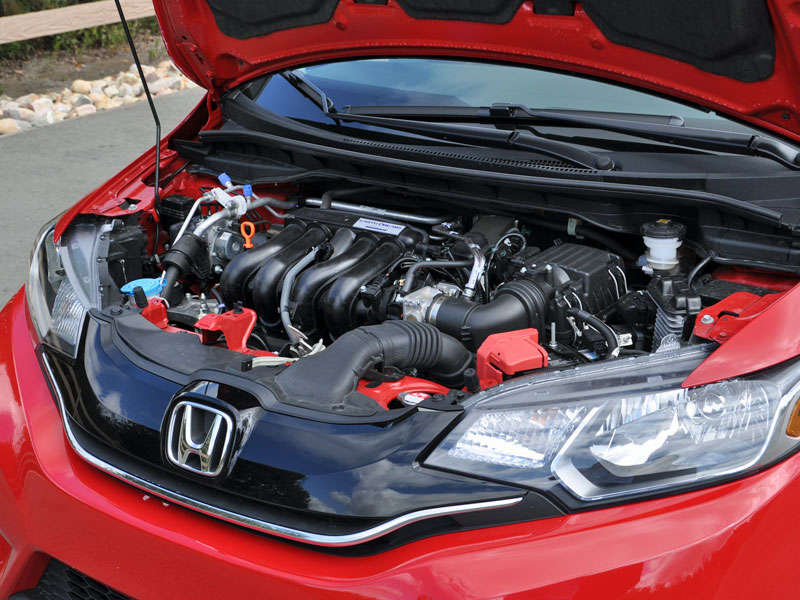
2015 Honda Fit First Drive Review: Driving Impressions
Ever heard the old adage that it is better to drive a slow car fast than it is to drive a fast car slow? With the 2015 Fit, Honda takes that to heart.
Though the 2015 Fit boasts a stronger engine than before, it still isn’t what one might call powerful. Nevertheless, the new CVT and EarthDreams engine play well with one another, and under normal driving conditions, few owners are likely to complain.
Honda’s CVT does a fairly good job of reducing the characteristic drone that tends to accompany such transmissions, and if placed in Sport mode delivers lively if not quite quick acceleration. Paddle shifters provide manual control over seven programmed “gears,” and when the Fit is hustled they do a decent job of delivering a sportier feel and sound. Still, this powertrain produces far more noise than it does velocity. Imagine what a small turbocharger could accomplish here.
Around downtown San Diego, I barely noticed the transmission, and out on the freeway the car cruised effortlessly at 75 mph. Wind noise is reduced to the point where occupants can actually have a conversation with one another, and while the Fit isn’t exactly quiet, it sure is composed.
Honda wanted the redesigned Fit to deliver a smooth and agile driving character, so it installs new motion-adaptive electric steering adapted from the larger Civic and Accord models. This change represents the greatest dynamic improvement to the new Fit. Whereas the old Fit was a chore to drive on the freeway, due to poor on-center feel and a tendency to follow grooves in the pavement or to succumb to crosswinds, the new Fit steers resolutely down the middle of a lane, the steering wheel feeling solidly planted on-center. Better yet, the new steering responds quickly and effortlessly off-center, and is accurate enough to allow the driver to make finely tuned corrections.
The redesigned 2015 Fit rides on a strut-type front suspension and a torsion-beam H-type rear suspension, the latter not the detriment to ride and handling that is normally associated with such designs. In the Fit EX and EX-L models that I drove, the cars exhibited a firm, connected ride quality combined with engaging and entertaining handling, much in the same way that the previous Fit Sport did.
Honda also says it has dialed in a forward tilting body roll posture for the car in order to “generate a sense of unity between steering input and body response.” It works to great effect, and the new Fit is a genuinely fun car to toss down a twisty road…as long as you’re going down hill. Going up hill, the Fit’s engine works harder to maintain or increase momentum, and it sounds that way.
The brake pedal is perfectly calibrated no matter how it is used. Need to bleed a little speed? The pedal responds with exceptional accuracy. Need to make a quick stop? No problem, as the pedal allows the driver to easily adjust braking pressure. This performance perfectly reflects the new Fit’s overall character, as if the car is always patting your hand and saying: “Don’t worry. I’ve got this.”
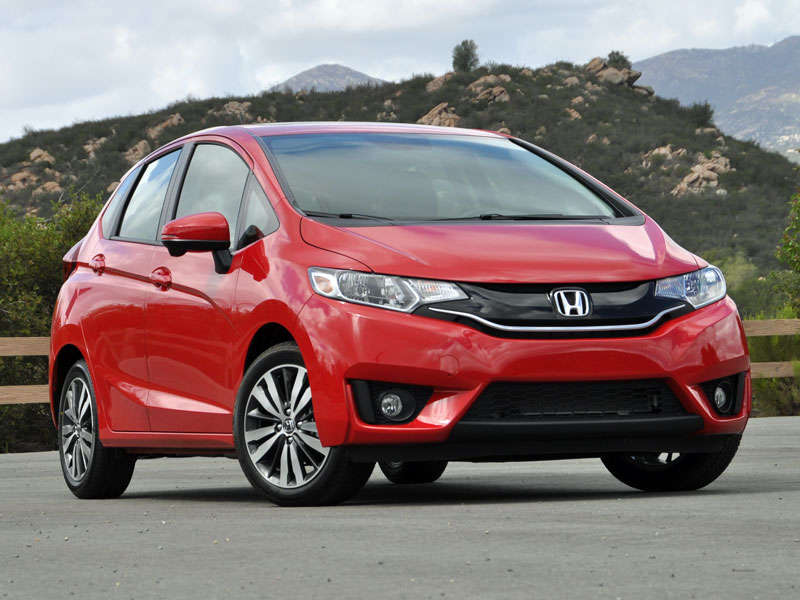
2015 Honda Fit First Drive Review: Conclusions
The redesigned 2015 Honda Fit strikes me as a masterfully engineered automobile. Affordable, roomy, fuel-efficient, jam-packed with utility and technology, and genuinely entertaining to drive, the Fit excels in just about every way. The car goes on sale on April 14, 2014, and Honda hopes to sell more than 70,000 of them in the U.S. in the next 12 months.
Something tells me that won’t be a problem.
